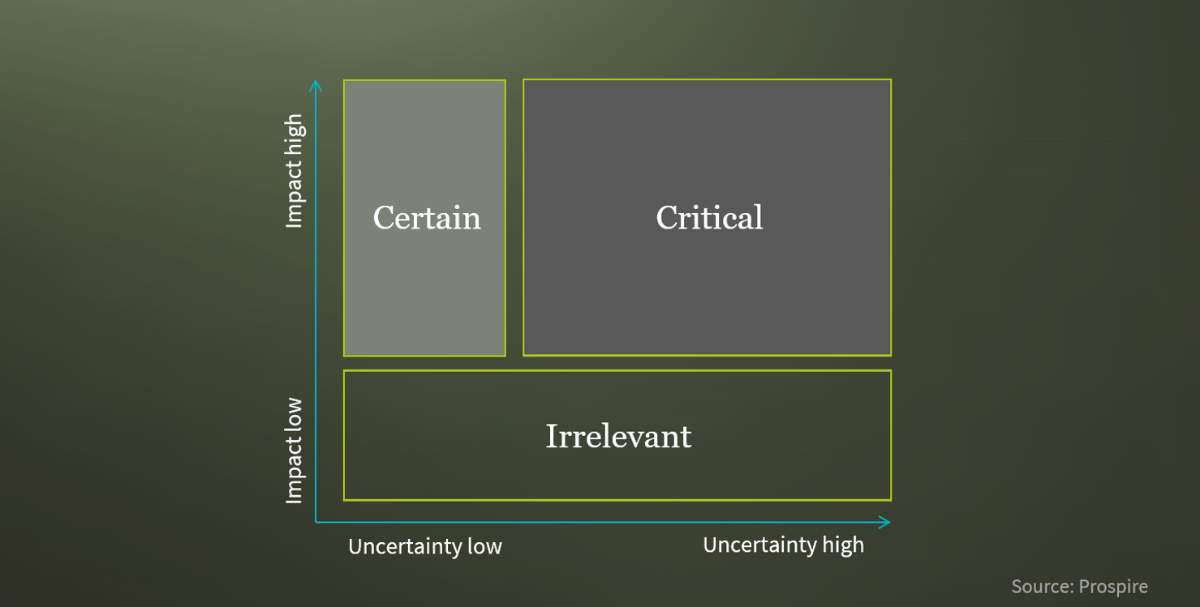Not only since the outbreak of Covid-19, the world is increasingly characterized by volatility, uncertainty, complexity and ambiguity. Advancing digitalization and globalization as drivers have long ensured that companies face increasing uncertainty about the future. The pandemic now provides an additional increase in the challenges companies face in strategic planning.
The importance of strategic foresight as a management function and competence is therefore greater today than ever before. Especially in uncertain times, a clear picture of the company's environment and its possible developments is indispensable for managers to act successfully. Strategic foresight focuses on three questions:
- What possible future developments can be identified in my field of business?
- What influence can they have on this very business?
- Which adaptations and measures promise success?
The goal of strategic foresight is to help proactively design and shape the future. Through a systematic examination of trends and changes in the corporate environment, possible development paths are to be identified at an early stage and the strategy to be adapted accordingly. However, strategic foresight does not mean identifying or forecasting the most likely development. Rather, it is about broadening the scope and evaluating various future development alternatives. Strategic foresight should also encourage people to think about the unthinkable and create a uniform understanding across the company about relevant future developments.
«The key is not to predict the future but to prepare for it.» (Perikles)
How can strategic foresight be approached as a tangible process? The procedure can be broken down along the three core questions mentioned above:
- Identification of relevant trends in the corporate environment
- Determination of possible developments and their impact
- Decision on how to deal with them in the company
In a first step, a holistic view is used to identify as many developments as possible that can be observed in the business area. While this "scanning" can be done well by individuals or a small team, a larger group of people familiar with the business area should be involved to determine the relevance of the identified trends. Involving a larger group of people covers the broadest possible spectrum of opinions and different perspectives on the one hand, and creates a uniform understanding within the company on the other.
For the relevance determination, each person evaluates the pre-identified trends according to two criteria: How high is the expected future impact of this trend on the business area, and how much uncertainty is there about the further development of the trend? The assessment is made individually in the context of each person's personal assessment. Based on the consolidated individual assessments, the trends can now be classified into three categories:
- Irrelevant: Trends with low impact. They are negligible for strategic planning.
- Certain: The occurrence of these trends is considered certain, and they should consequently be incorporated directly into strategic planning.
- Critical: These trends with potentially high impact, combined with high uncertainty, are the most exciting category for further strategic planning.


